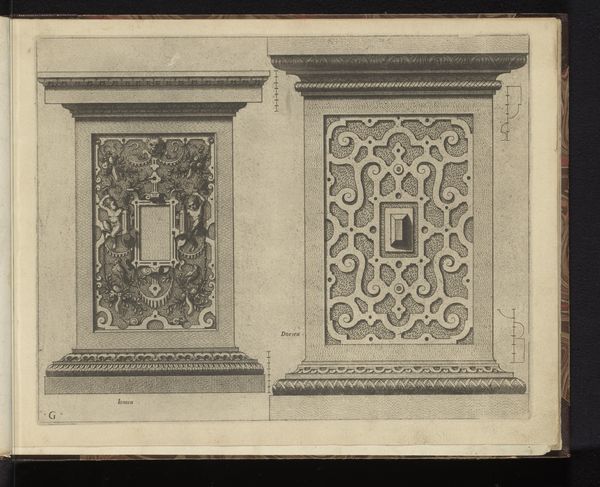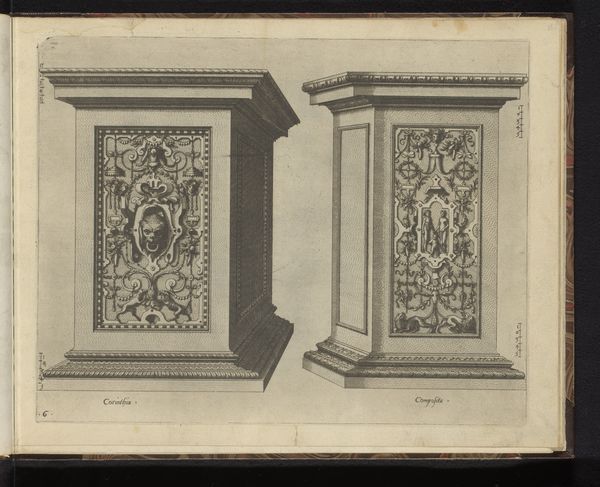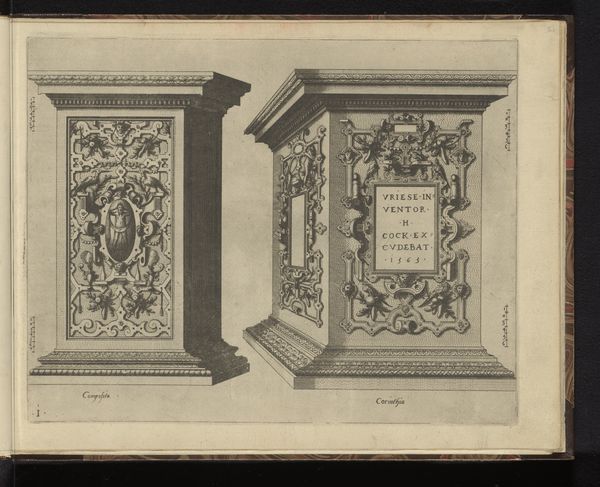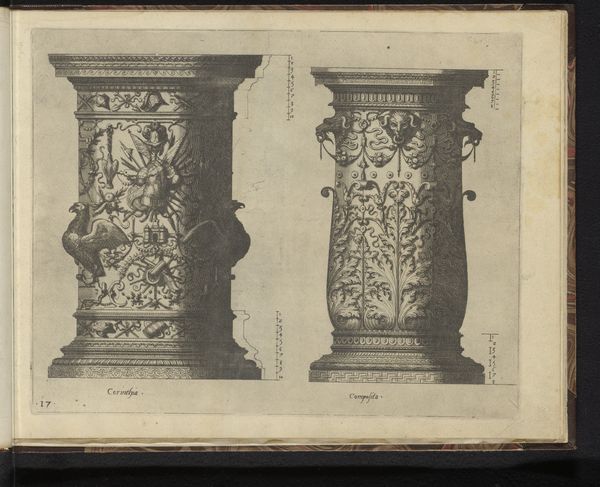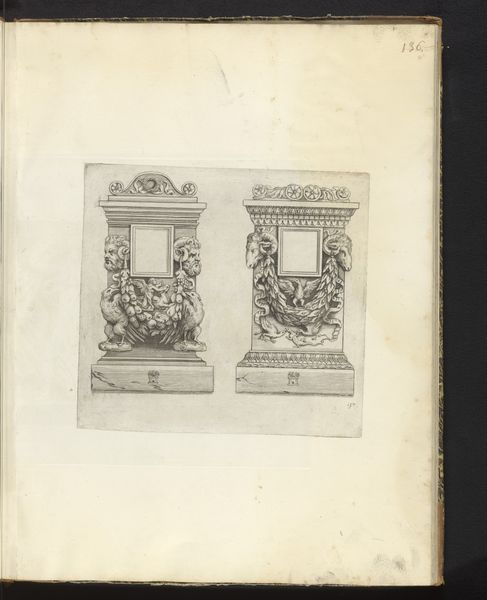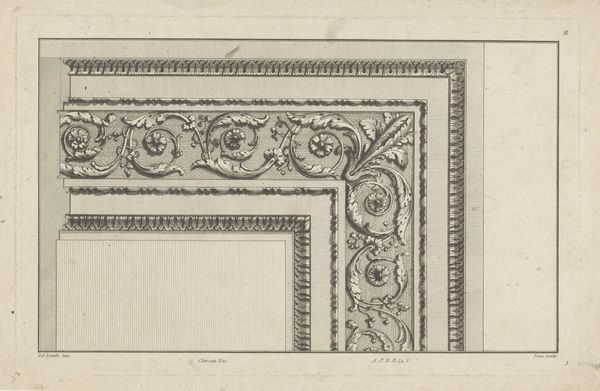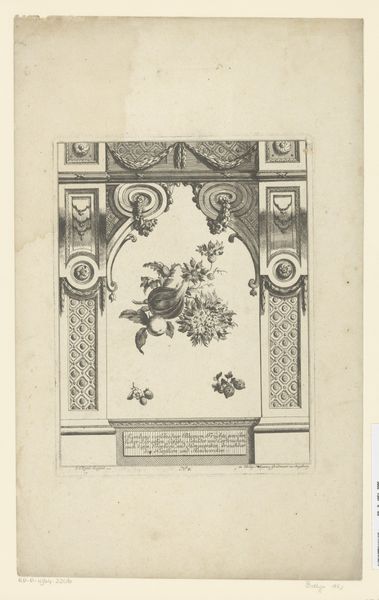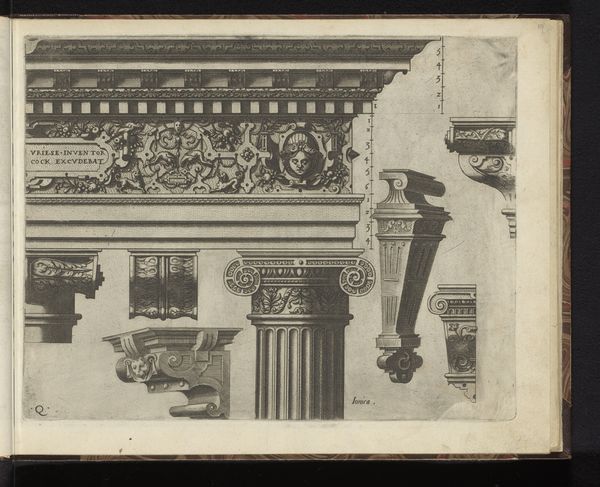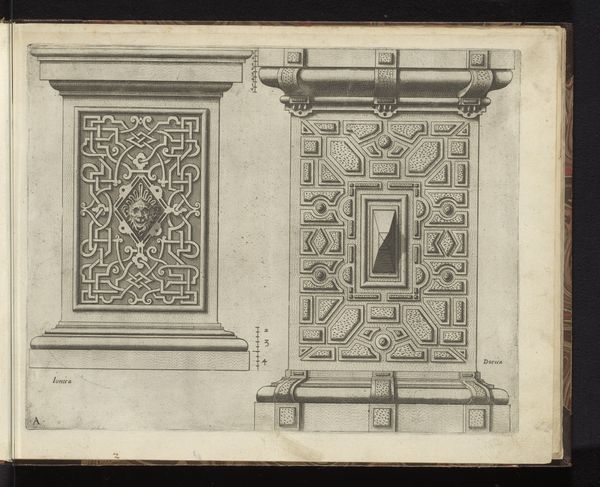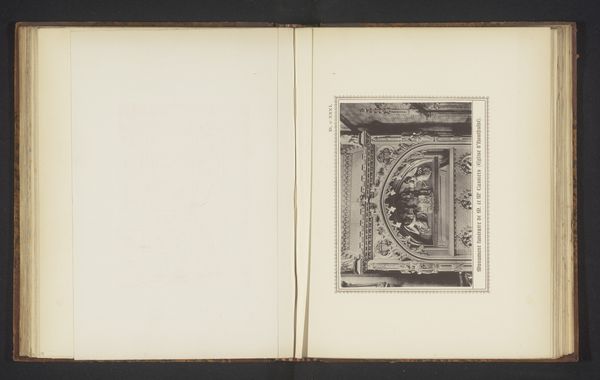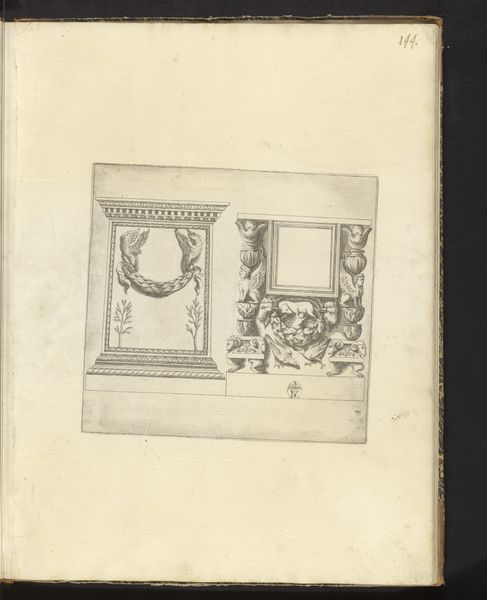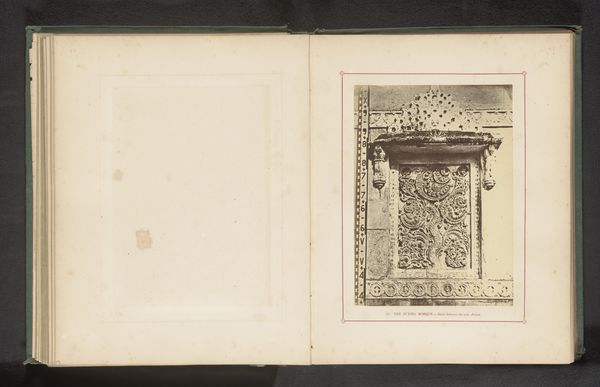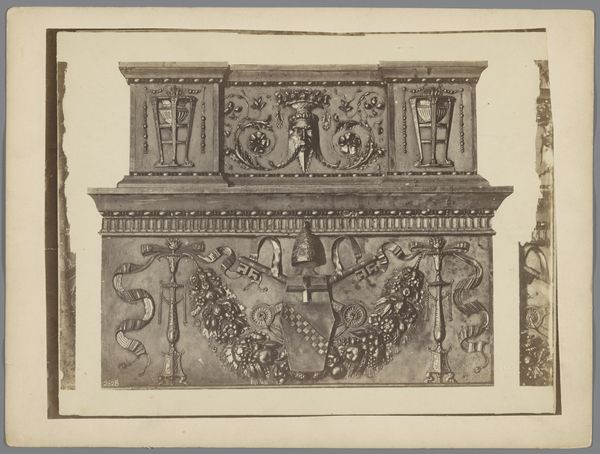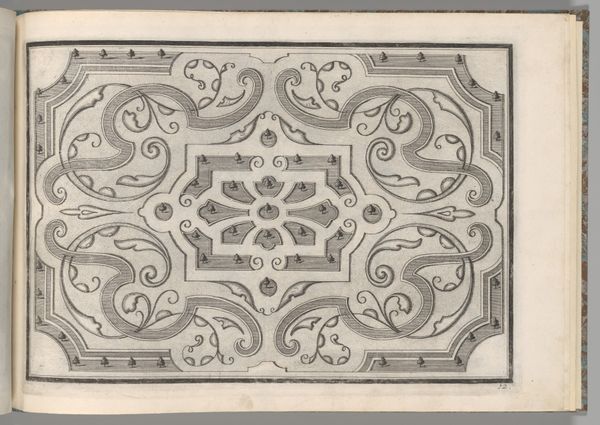
drawing, print, paper, engraving, architecture
#
drawing
# print
#
mannerism
#
paper
#
form
#
geometric
#
line
#
decorative-art
#
engraving
#
architecture
Dimensions: height 235 mm, width 302 mm
Copyright: Rijks Museum: Open Domain
These Two pedestals in the Ionic and Doric Order were made by Johannes or Lucas van Doetechum at an unknown date. These designs reflect a time when European culture was deeply influenced by classical antiquity. Look closely, the pedestals are adorned with intricate patterns, floral motifs, and a lion's head. These elements are not merely decorative; they're deeply rooted in classical symbolism. The Ionic and Doric orders, originating in ancient Greece, carry with them notions of strength, harmony, and proportion. The pedestal itself is a symbol of status, made to elevate and celebrate the sitter. Such designs were integral to shaping perceptions of power and identity through architectural and decorative arts. While these pedestals may seem like relics of a distant past, they remind us of the enduring influence of classical ideals on Western aesthetics and cultural values.
Comments
No comments
Be the first to comment and join the conversation on the ultimate creative platform.
